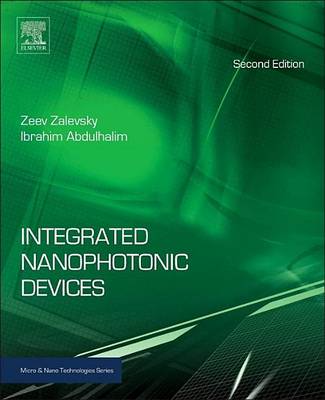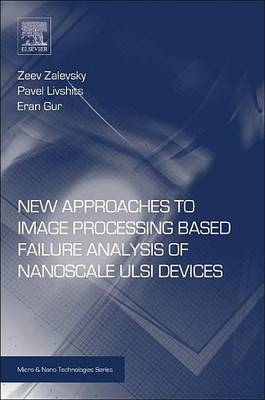Micro and Nano Technologies
2 total works
Nanophotonics is a field of science and technology based on the manipulation of light with equally miniscule structures, in the same way that computer chips are used to route and switch electrical signals. By enabling new high bandwidth, high speed optoelectronic components, nanophotonics has the potential to revolutionize the fields of telecommunications, computation and sensing.
In this book, Zalevsky and Abdulhalim explore one of the key technologies emerging within nanophotonics, that of nano-integrated photonic modulation devices and sensors. The attempt to integrate photonic dynamic devices with microelectronic circuits is becoming a major scientific as well as industrial trend due to the fact that currently processing is mainly achieved using microelectronic chips but transmission, especially for long distances, takes place via optical links.
In this book, Zalevsky and Abdulhalim explore one of the key technologies emerging within nanophotonics, that of nano-integrated photonic modulation devices and sensors. The attempt to integrate photonic dynamic devices with microelectronic circuits is becoming a major scientific as well as industrial trend due to the fact that currently processing is mainly achieved using microelectronic chips but transmission, especially for long distances, takes place via optical links.
New Approaches to Image Processing Based Failure Analysis of Nano-Scale ULSI Devices
by Zeev Zalevsky, Pavel Livshits, and Eran Gur
Published 20 November 2013
New Approaches to Image Processing Based Failure Analysis of Nano-Scale ULSI Devices introduces the reader to transmission and scanning microscope image processing for metal and non-metallic microstructures.
Engineers and scientists face the pressing problem in ULSI development and quality assurance: microscopy methods can't keep pace with the continuous shrinking of feature size in microelectronics. Nanometer scale sizes are below the resolution of light, and imaging these features is nearly impossible even with electron microscopes, due to image noise.
This book presents novel "smart" image processing methods, applications, and case studies concerning quality improvement of microscope images of microelectronic chips and process optimization. It explains an approach for high-resolution imaging of advanced metallization for micro- and nanoelectronics. This approach obviates the time-consuming preparation and selection of microscope measurement and sample conditions, enabling not only better electron-microscopic resolution, but also more efficient testing and quality control. This in turn leads to productivity gains in design and development of nano-scale ULSI chips.
The authors also present several approaches for super-resolving low-resolution images to improve failure analysis of microelectronic chips.
Engineers and scientists face the pressing problem in ULSI development and quality assurance: microscopy methods can't keep pace with the continuous shrinking of feature size in microelectronics. Nanometer scale sizes are below the resolution of light, and imaging these features is nearly impossible even with electron microscopes, due to image noise.
This book presents novel "smart" image processing methods, applications, and case studies concerning quality improvement of microscope images of microelectronic chips and process optimization. It explains an approach for high-resolution imaging of advanced metallization for micro- and nanoelectronics. This approach obviates the time-consuming preparation and selection of microscope measurement and sample conditions, enabling not only better electron-microscopic resolution, but also more efficient testing and quality control. This in turn leads to productivity gains in design and development of nano-scale ULSI chips.
The authors also present several approaches for super-resolving low-resolution images to improve failure analysis of microelectronic chips.

